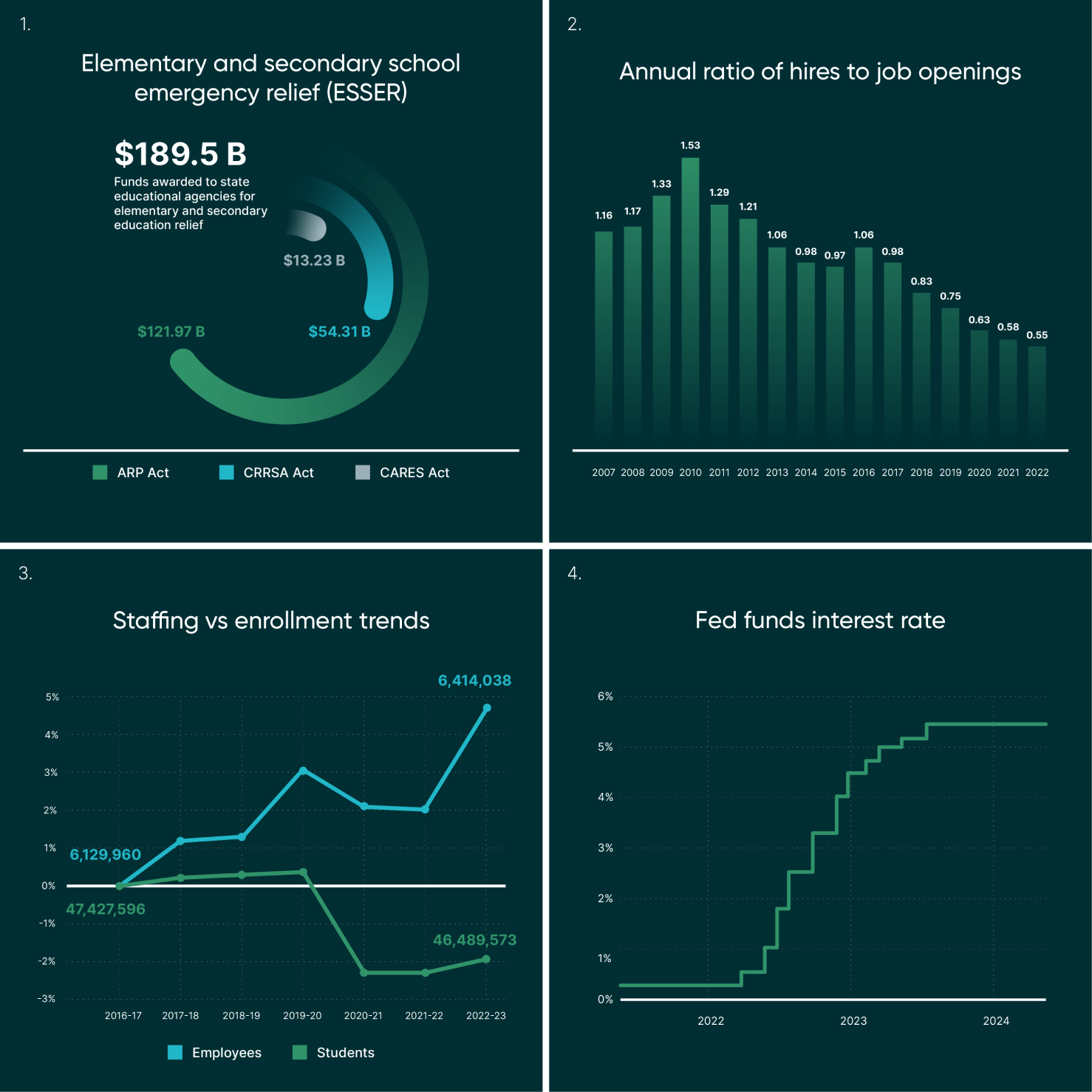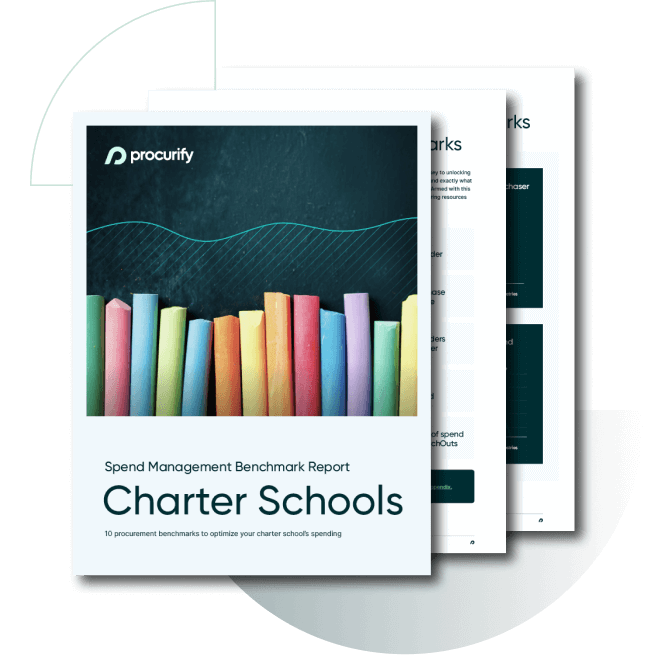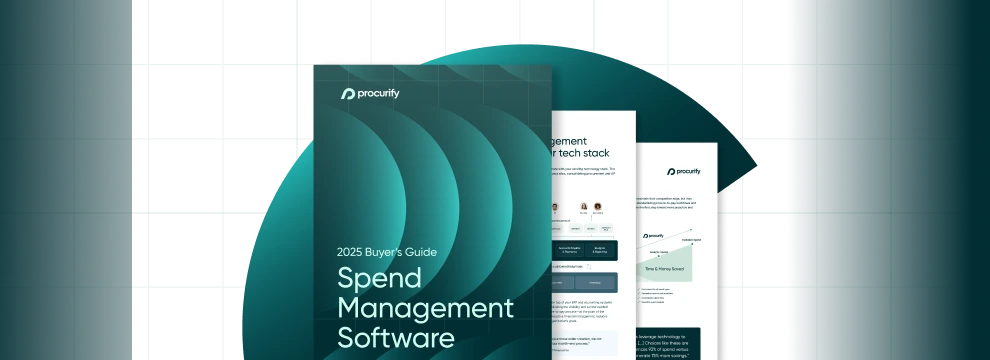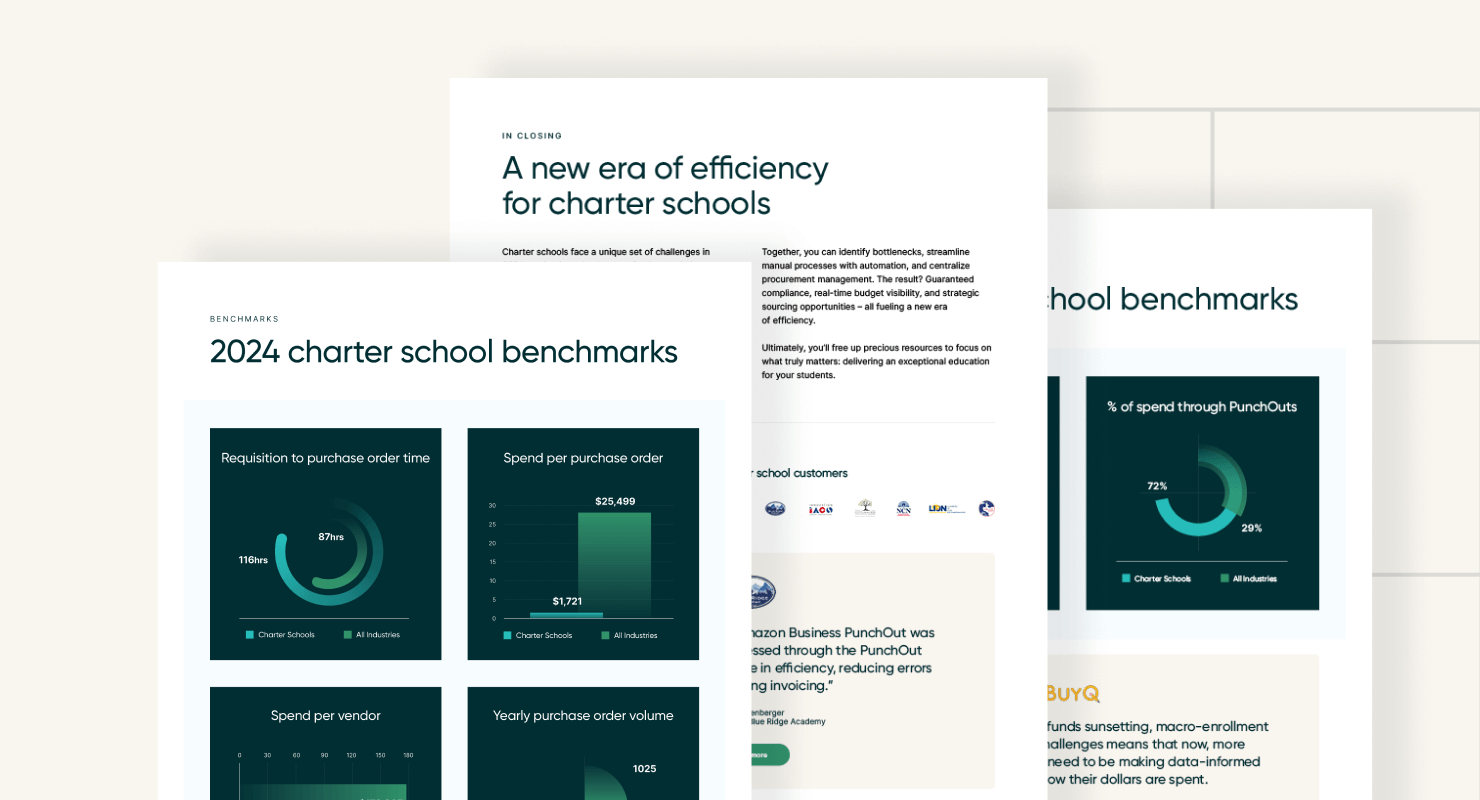
Cutting Costs, Charter Schools? Start by Understanding Your Spending Data

Data can’t be ignored. And if you believe the spending stats and trends that are currently impacting the charter school space, there are causes for concern.
I was able to witness a shift first-hand while recently attending the 2024 National Charter Schools Conference in Boston. Each year, I typically walk away inspired by wide-ranging discussions of innovation and experimentation – hallmarks of the charter school community. But this time around, almost every school leader was uniformly focused on the same two things: budget and enrollment.
Which is frankly just one thing: financial stability.
So why is the industry back to the operational basics? Well, the answer is logical if we look at what’s transpired since 2020:
-
Education Stabilization Funding for K-12 hit $189 Billion during COVID
-
Workforce changes drastically impacted education staffing (and in turn, employee compensation)
-
Public enrollment continued to decline year-over-year (YoY) reflecting a national demographic trend (fewer babies = fewer students) despite schools adding more full-time equivalents (FTEs)
-
Inflation reared its head and the Federal Government raised interest rates from essentially 0 to 5.5% in less than 18 months

Sources: 1. U.S. Department of Education – Education Stabilization Fund; 2. NEA Analysis of U.S. Bureau of Labor Statistics 3. Edunomics Lab; 4. Trading Economics.
Add all these above points (one might call them the four horsemen of the current K-12 financial frenzy) up and we get the scenario we find ourselves in today.
School leaders can’t look past the budget and enrollment. But despite the red flags in our current reality, I think people left Boston encouraged to tackle these two issues head-on.

Charter School Benchmark Report
For a more complete breakdown of this type of procurement data at charter schools across the United States, you can reference the recently published 2024 Procurify Charter School Benchmark Report.
Pick up the rock
So if this is the environment that we are in, then what now?
Well, I certainly don’t have all the answers, but I’ll suggest one uncomfortable but necessary, starting place:
Pick up the rock – AKA your surface-level understanding of your financials – and don’t be afraid to look underneath.
It may not be pretty and there may be ‘creepy-crawlies’ waiting for you, but without knowing your school’s unique problem set, you are left to apply generic solutions for macro-challenges that are not tailored to your context.
Let’s take the four horseman as an example.
How would your school answer the following four questions:
-
Is your school’s enrollment declining or increasing?
-
Is your school’s facility debt service fixed or variable?
-
Is your school having challenges adding FTEs or reducing FTEs?
-
Did your school use ESSER funds for recurring expenses?
Well, you’d answer these questions by looking at the data! And depending on your state, number of campuses, instructional model, and a host of other factors – the answers will vary greatly.
The point is: regardless of the macro-environment, if tackling budget and enrollment are truly your top priorities you have to first know your organization’s data inside and out before designing the plan forward.
The tailwinds of stimulus funding the last few years, while helpful and necessary at the time, masked the data-driven approach many schools needed to support critical KPIs like budgetary control and a strong enrollment pipeline.
It is time to take control of your data collection and spending strategy.
Find and follow the data
So what might a more proactive approach to data collection look like?
Let’s take a real-world example that we often see at BuyQ: reducing regular operating expenses (excluding facility debt) through strategic procurement.
How much data do you have on your procurement process today? Do you have insight into how dollars are flowing out of your organization beyond tracking budget vs. actuals?
For many schools, the answer is no. We work with thousands of charter schools across the United States through BuyQ’s group purchasing contracts and procurement consultancy and it’s very common for there to be almost no data collected on how funds flow through the purchasing process. Odd, considering that budget is supposed to be a top priority.
So what type of data am I even talking about? Your school should be able to answer questions like:
-
What’s our approval process for ordering goods/services today?
-
How many vendors are we buying from for X category?
-
How long does it take from requisition to PO creation?
-
What’s our average order size?
-
Are we negotiating our pricing for bulk goods/services?
In this case, the budget vs. actual is the rock. But how the dollars were spent and why is what’s underneath the rock. And trust me, once you have the ‘creepy-crawlies’ named and categorized, it gets a lot easier to “clean the rock.”
Making sense of data goes well beyond procurement. The takeaway is not to be satisfied with a topline metric without making the effort to understand the contributing factors. Getting to the heart of the data story is almost always a good place to start when faced with strategic challenges your team is unsure how to tackle.
In today’s challenging economic environment for charter schools, it feels much better when you don’t have to wonder what’s under the rock.

Benchmark Your Charter School’s Spending
This free report provides 10 critical benchmarks for charter school procurement. Use this data to identify areas for improvement and maximize your resources.



